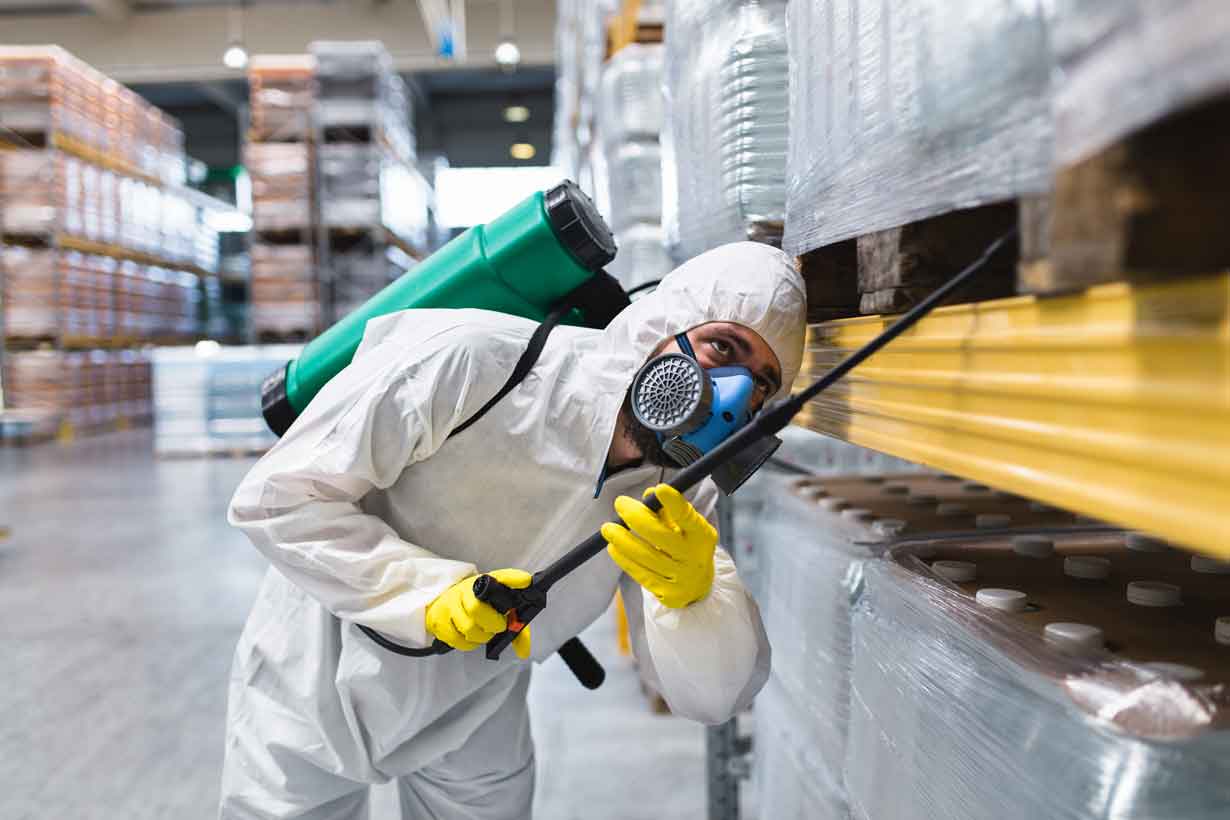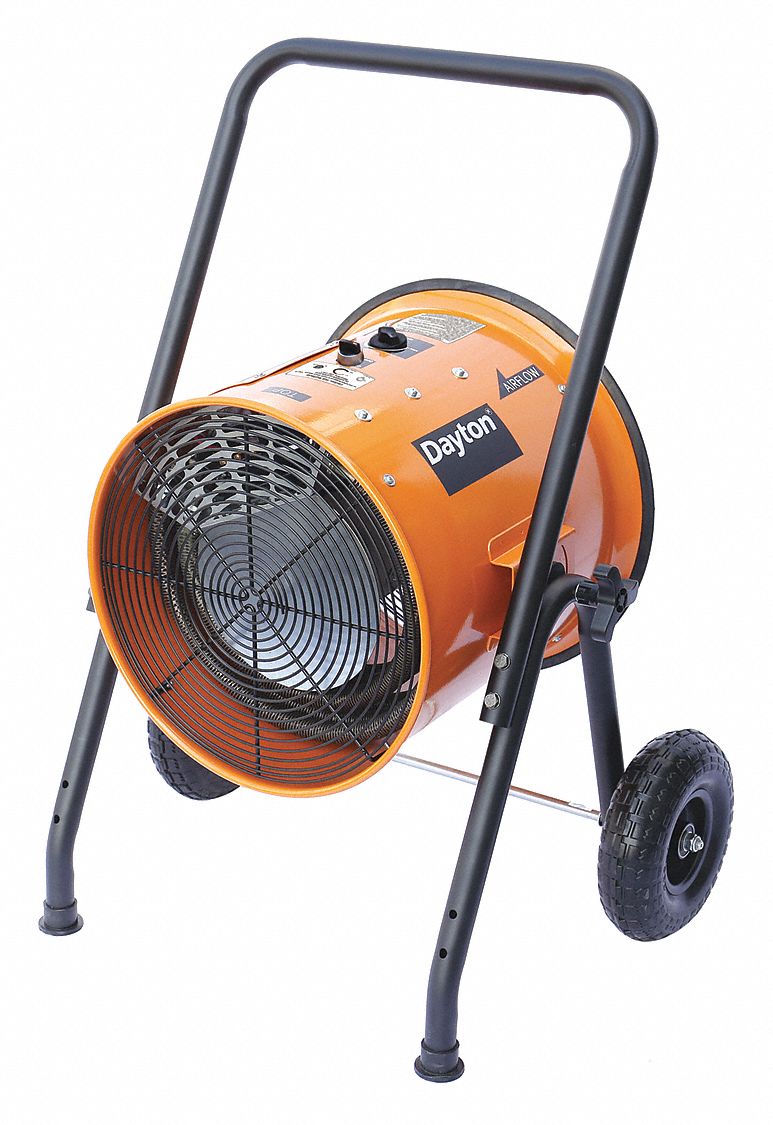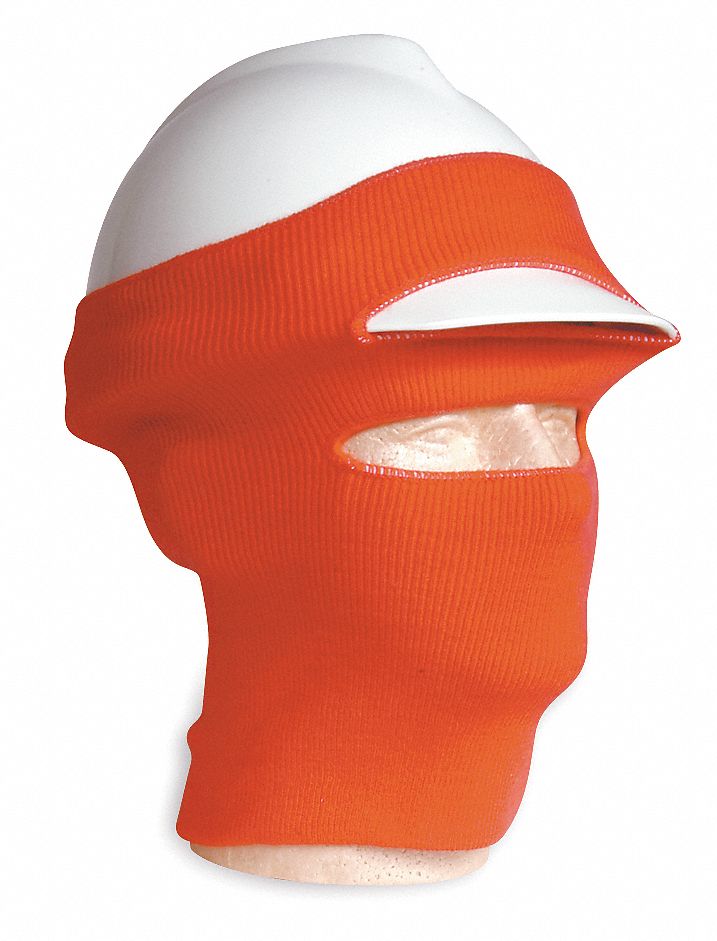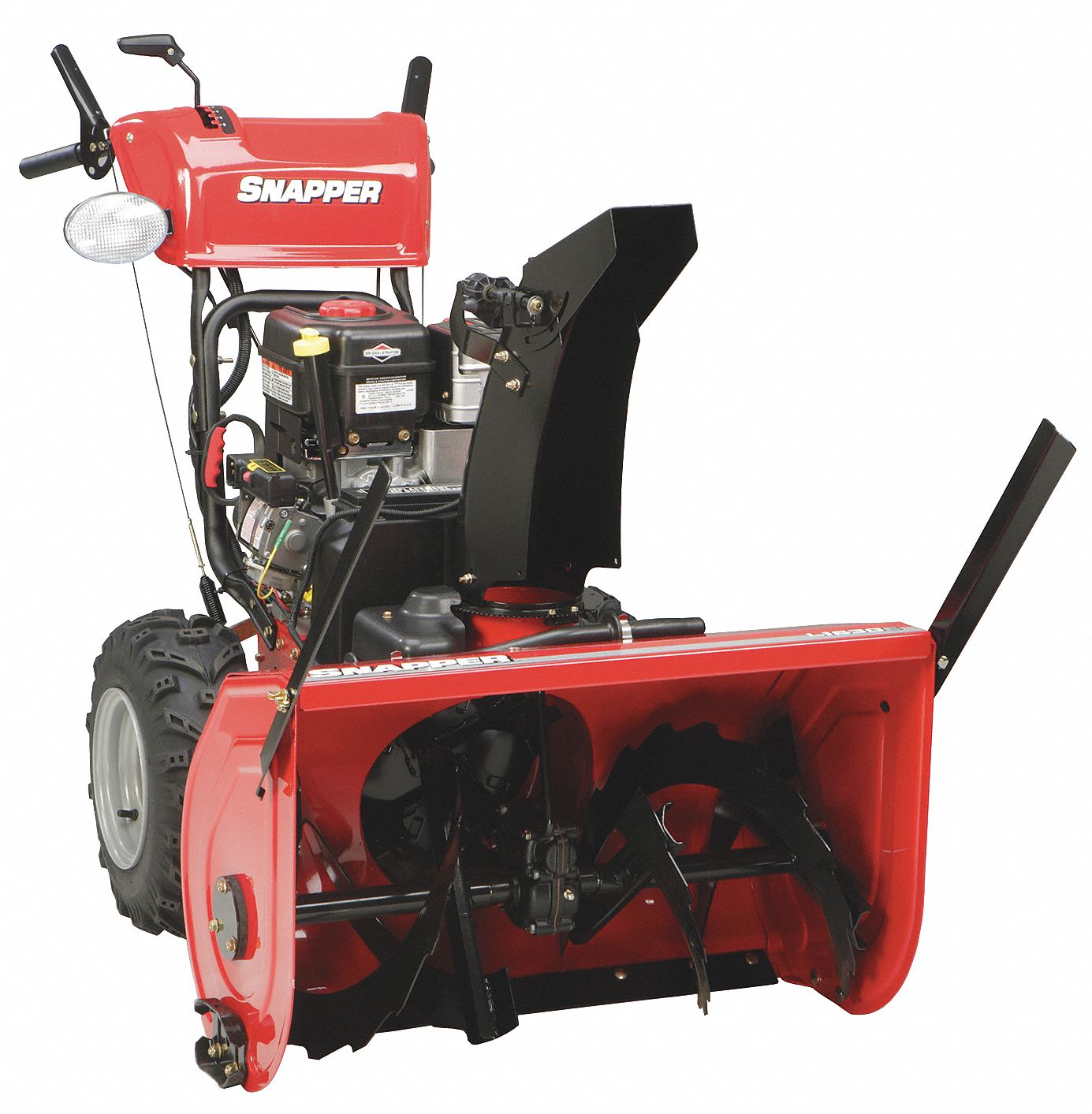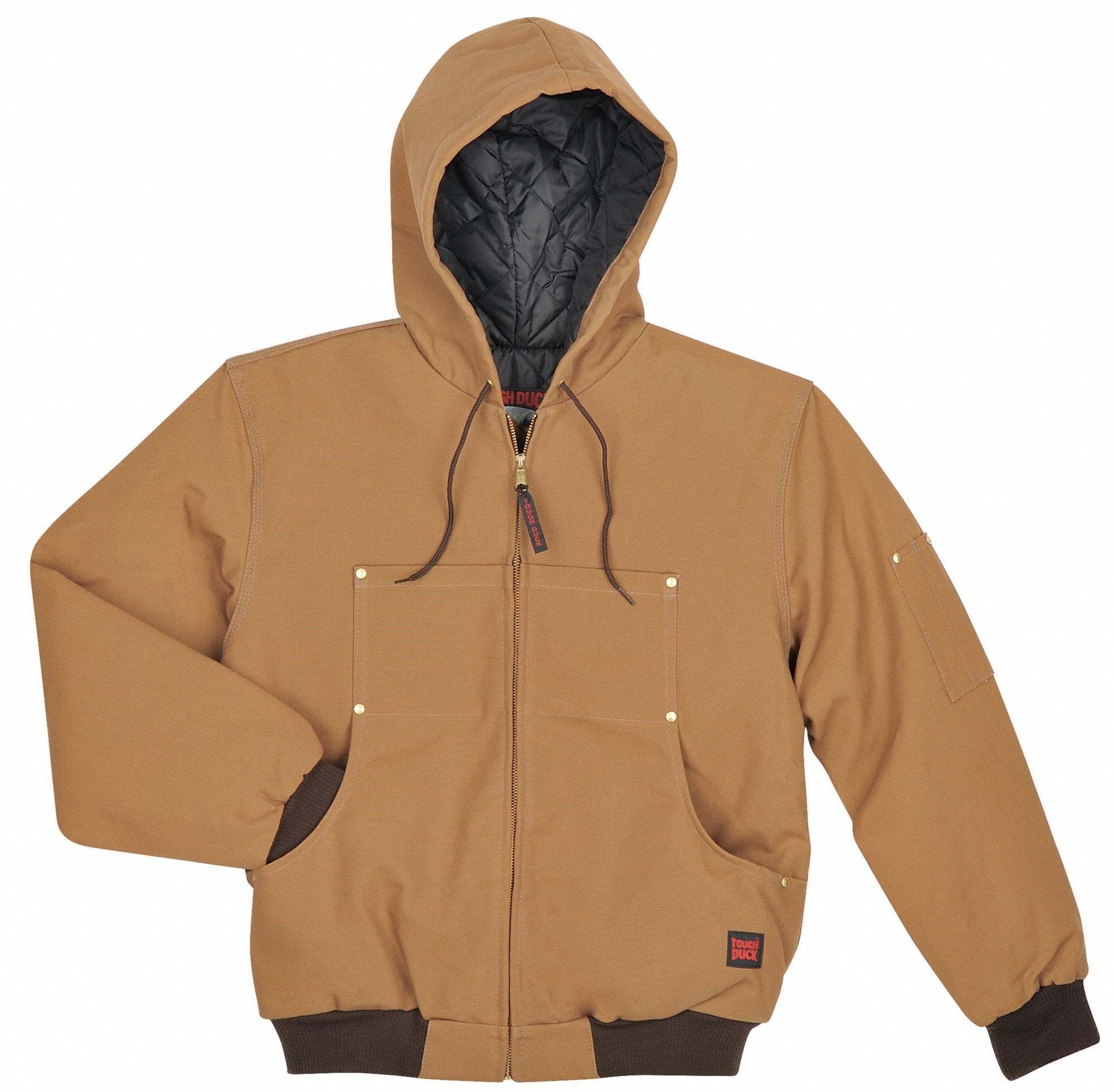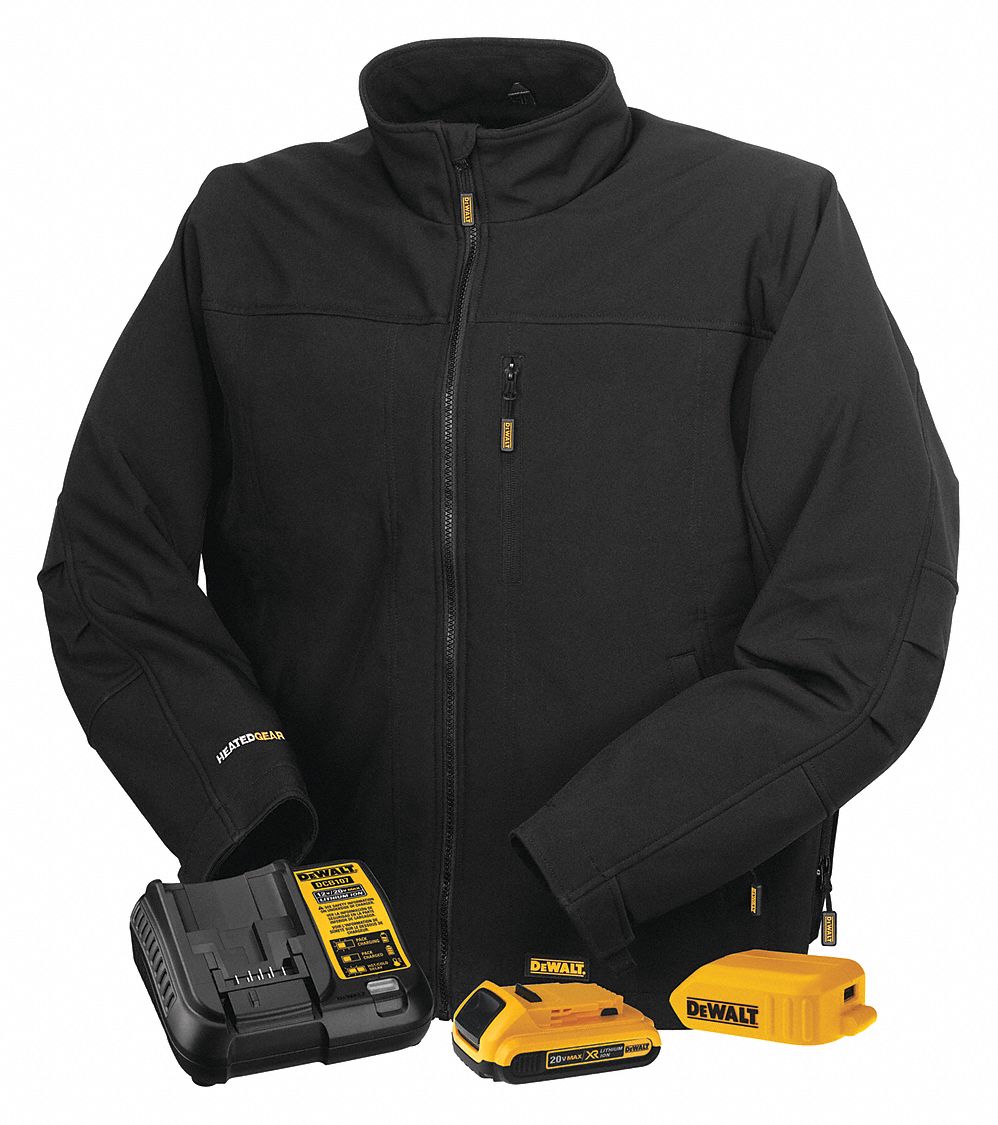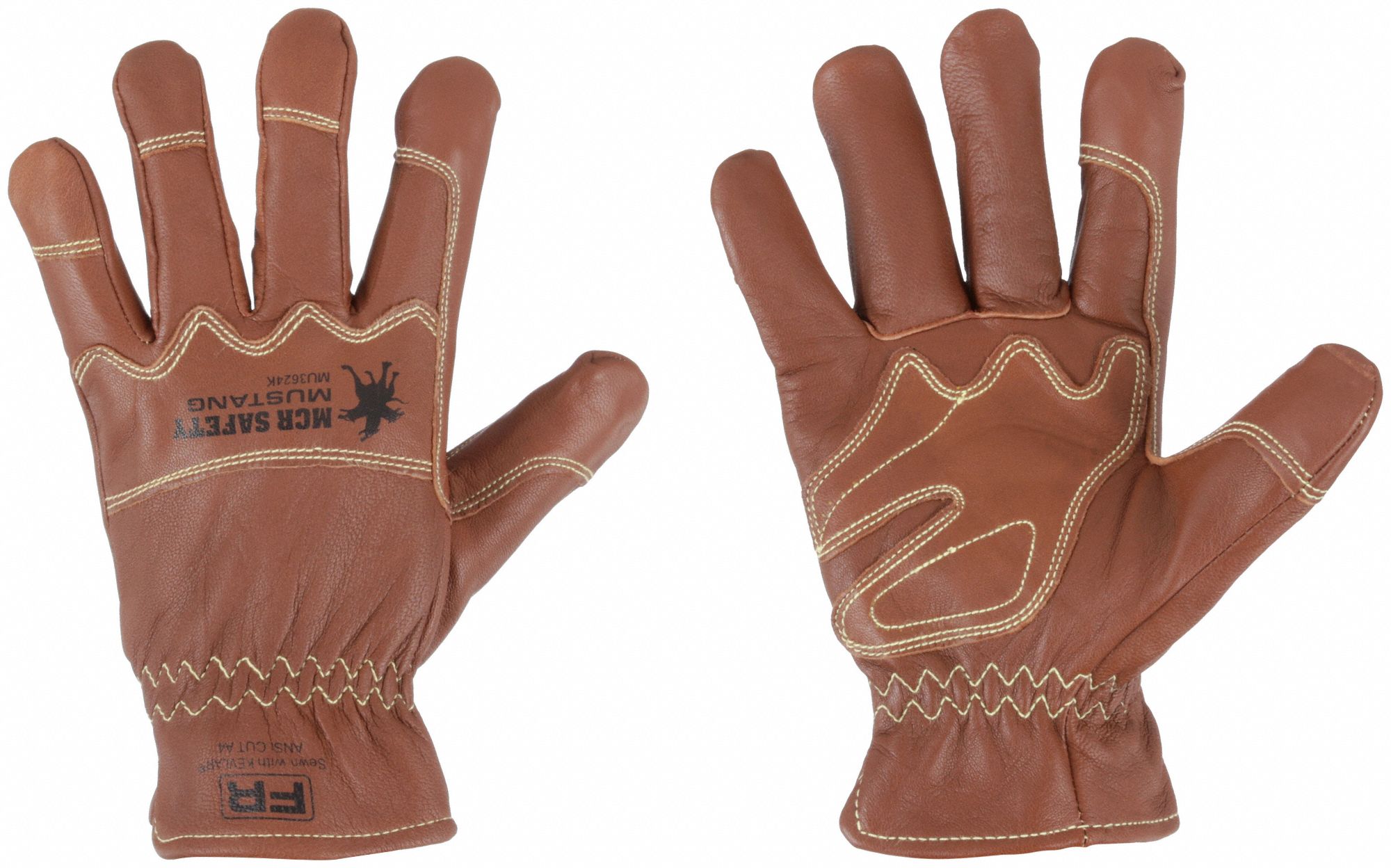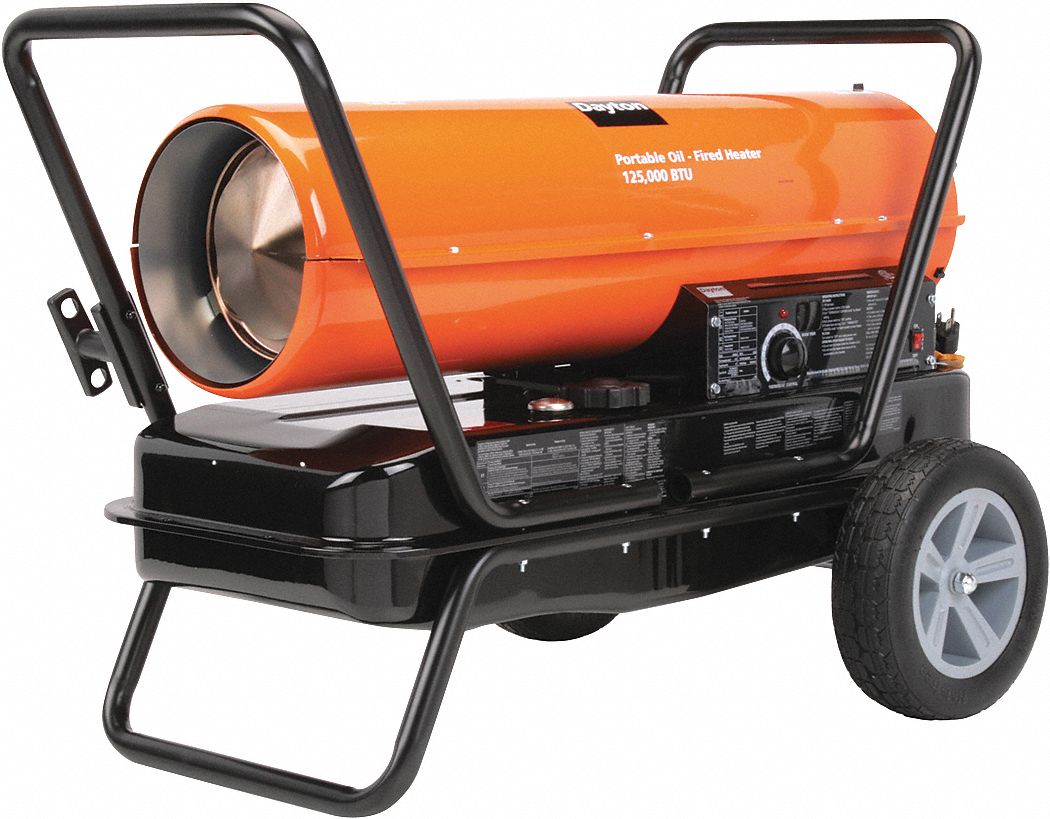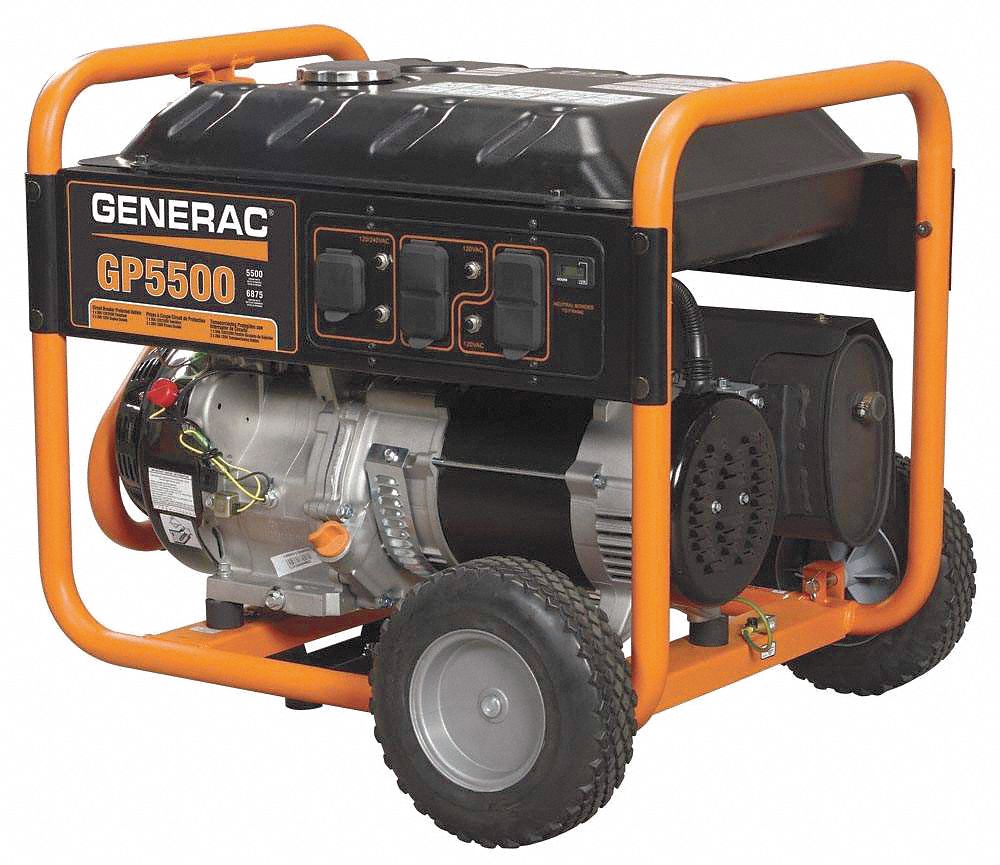

Portable Heater Guide: Choosing the Best Space Heater for Your Location
By Grainger Editorial Staff 11/18/20
Portable heaters can bring warmth to rooms and other indoor and outdoor areas that are impractical or impossible to heat using central HVAC systems. Whether you're trying to provide heat to an open-air job site, a drafty office or a basement bonus room, it's helpful to first understand basic heating methods and power sources.
Heating Method: Convection vs. Radiant Heat
There are two ways that a heater can make you feel warm: convection and radiation.
Convection heating happens when a heating element warms air that's in contact with it and that air circulates through a room. As the air gets hot, it expands and rises; as it gets farther from the heater, it begins to cool and is pushed out to the sides by the warmer air rising up beneath it. Eventually the cooling air descends, creating a circular current rising from the bottom up.
The movement of air created by a convection heater is what distributes heat around the room. Many convection heaters include a fan to speed the circulation of air and distribution of heat.
Radiant heat, on the other hand, is delivered directly from a heating element via thermal radiation—no air currents required. Thermal radiation travels on electromagnetic waves in the same way that light does, but most thermal energy travels on wavelengths that we can't see. Think of a car sitting out in the sun on a bright day. The radiant energy of the sunlight heats up the body of the car, which in turn begins to radiate heat, making it warm or even hot to the touch. Meanwhile, the sunlight does not heat up the air itself.
To feel the warmth from radiant heat, you need a direct line of sight to the heater, and your distance from it makes a big difference.
Advantages of Radiant Heaters
Radiant heaters are quiet; they don't rely on noisy fans to move heated air. And because they deliver heat directly to you, they can deliver it more quickly than convection heaters that need to raise the air temperature throughout a space before you start to feel warm.
Radiant heaters can effectively provide spot heating in places that are too large or too open for the air in the whole space to be brought up to temperature. Radiant heat is a great choice for open-air uses such as bus stops, patios or vestibules. In these places, the only way for a convection heater to keep people warm may be for it to blow directly at them, like a hair dryer.
And according to the Department of Energy, radiant heaters can be a more efficient choice if you're only going to be in a room for a few hours.
Advantages of Convection Heaters
There's a good reason that so many portable heaters use convection. By warming up the air throughout a space, convection heaters can often provide more flexibility and a larger area of personal comfort than radiant heaters. A radiant heater will also eventually raise the air temperature in a room, but it will take two or three times longer to do so compared to a similarly powered convection heater, and the intense heat will be felt closest to the heater.
Power and Energy Consumption Ratings
Portable heater output is usually described in BtuH, or Btu per hour. One Btu, or British thermal unit, is the amount of energy it takes to raise the temperature of one pound of water by one degree Fahrenheit.
Some portable electric heaters are also output-rated in watts or kilowatts. With this rating you can better understand the cost of operating the unit and the demands that it will make on your electrical system. You can also divide an electric heater's BtuH rating by 3.41 to find its approximate output in watts; for example an electric 5,118 BtuH heater has an output of 1500 watts or 1.5 kilowatts.
Many portable forced-air heaters also have an output rating in cubic feet per minute, or cfm. This describes the unit's output in terms of air volume, so it's basically a measure of fan power and design. Units with a higher cfm rating can deliver larger volumes of air more quickly—but the amount of heat that they can add to the air still depends on their BtuH ratings.
Electricity as a Heat Source
Most portable heaters designed for homes and offices use electric power, which is convenient and does not emit combustion gas into the indoor environment. These heaters are commonly designed for the 120-volt 15-amp receptacles available in homes and offices, which can support units up to 1500 watts, or about 5,118 BtuH.
Keep in mind that convection heaters use air currents to distribute heat, and two units that produce the same amount of heat energy may not distribute it with the same efficiency. Fan-forced units with higher cfm ratings can deliver heat more efficiently.
There are also portable job site and workshop heaters that use electric power. Many of these heavy duty portable electric heaters use higher voltages and amperages than most home or office receptacles can support, allowing them to produce more heat (higher BtuH output) than home units.
Combustion as a Heat Source
Some portable heaters use combustion to provide heat. These units can be fueled by gas, oil or kerosene. Combustion heaters are typically cheaper to operate than electric heaters, and the most powerful portable job site heaters use combustion.
Depending on fuel type, the combustion process can release carbon monoxide, nitrogen dioxide and water vapor into the air, which can lower indoor air quality and, in high concentrations, can cause serious harm and even death. For this reason, almost all portable combustion heaters are designed to be used only on well-ventilated job sites—not in homes or other places people live and sleep. Indirect-fired portable heaters keep the flame separate from the heated air, which allows clean, warm air to be ducted into sealed buildings and tents.
Safety tip: When using a portable combustion heater, consult the manufacturer's instructions for advice on ventilation. For example, one manufacturer recommends providing an opening to fresh outdoor air of at least three square feet per 100,000 BtuH of rating for its propane torpedo heater.
Making a Decision
To make a decision between the many types of portable heater that are available, start by thinking of your heating goals.
Do you need to provide supplemental heat to a space? Do you need to raise the temperature quickly? Are you trying to heat an indoor space or outdoor space? Or are you trying to warm people who are just "passing through" the area—waiting in line to enter a fully heated space, or performing a task in the area and then moving on?
The answers to these questions will help you determine what type of heater will best work for your goals.
Job Site and Workshop Heaters
| Power Source | Heater Type | Heating Method | Typical BtuH Range | Notes | |
|---|---|---|---|---|---|
| Electric | Forced-air job site heaters | 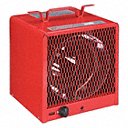 |
Convection | 5,118–19,110 | Many forced-air job site heaters use higher voltage and/or amperage to deliver more heat than home/office portable heaters, but they require special power receptacles. |
| Electric | Infrared job site and garage heaters | 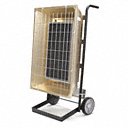 |
Radiant | 4,947–38,226 | Can deliver heat to people without needing to heat the air. |
| Gas | Table-top heater | 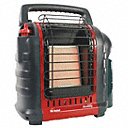 |
Radiant | 3,800–18,000 | Can function as personal heaters, delivering warmth to people in a small area without needing to heat the air, and easily carried around a work site. |
| Gas | Tank-top heaters | 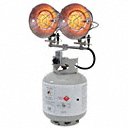 |
Radiant | 15,000–45,000 | These units attach directly to fuel tanks; extremely portable. |
| Kerosene | Radiant floor heaters | 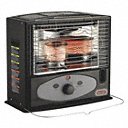 |
Radiant | 10,000–10,500 | Provide heating for small work spaces. |
More Powerful Job Site Heaters
| Power Source | Heater Type | Heating Method | Typical BtuH Range | Notes | |
|---|---|---|---|---|---|
| Electric | Salamander heaters | 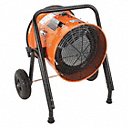 |
Convection | 20,500–204,600 | Deliver forced-air heat and do not require venting; may use 208V/240V, 440V/480V or 600V power. |
| Oil and kerosene | Radiant torpedo heaters | 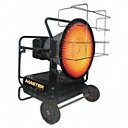 |
Radiant | 70,000–125,000 | Provide high-power radiant heating. |
| Oil and kerosene | Direct-fired torpedo heater | 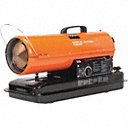 |
Convection | 45,000–650,000 | Provide high-power forced-air heating. |
| Oil and kerosene | Indirect-fired torpedo heater | 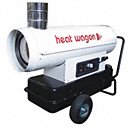 |
Convection | 91,900–254,400 | Designed to keep the flame and its emissions separate from the heated air. Usually placed outside with ducting to bring the heated air into a building. |
| Gas | Torpedo heaters | 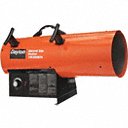 |
Convection | 40,000–950,000 | Provide high-power forced-air heating. Work quickly but are generally loud and require venting. |
Can-Style Job Site Heaters
| Power Source | Heater Type | Heating Method | Typical BtuH Range | Notes | |
|---|---|---|---|---|---|
| Gas | Convection can heater | 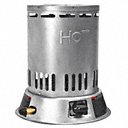 |
Convection | 25,000–250,000 | Create currents of warm air in a small area without using a fan (gravity convection); often used in garages and construction sites. |
| Gas | Radiant can heaters | 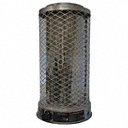 |
Radiant | 100,000–250,000 | Provide radiant heat to a small area; often used in garages and construction sites. |
Portable Heaters for Tents and Ducted Areas
| Power Source | Heater Type | Heating Method | Typical BtuH Range | Notes | |
|---|---|---|---|---|---|
| Electric | Ducted and tent heaters |  |
Convection | 5,115–37,000 | Designed for tents and other enclosed areas. |
| Gas | Ducted and tent heaters | 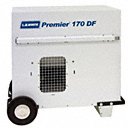 |
Convection | 80,000–400,000 | Designed for tents and other enclosed areas. |
Heaters for Hazardous Locations
| Power Source | Heater Type | Heating Method | Typical BtuH Range | Notes | |
|---|---|---|---|---|---|
| Electric | Hazardous location heaters | 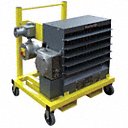 |
Convection | 51,200–85,400 | Can be used around flammable gas, vapor, powder and dust. |
Outdoor Restaurant and Patio Heaters
| Power Source | Heater Type | Heating Method | Typical BtuH Range | Notes | |
|---|---|---|---|---|---|
| Gas | Patio heaters | 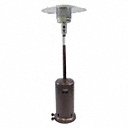 |
Radiant | 41,000–45,000 | Some patio heaters use a circular reflector to direct radiant heat downward and outward in a cone shape, while others use a standing glass tube to provide height along the length of the tube. |
Portable Heaters for the Home/Office
| Power Source | Heater Type | Heating Method | Typical BtuH Range | Notes | |
|---|---|---|---|---|---|
| Electric | Portable home/office heaters | 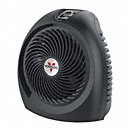 Desk heaters Desk heaters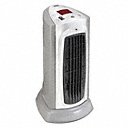 Tower heaters and pedestal heaters Tower heaters and pedestal heaters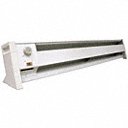 Baseboard heaters Baseboard heaters |
Convection | Up to 5,118 | Home/office heaters are typically designed for quieter operation and are often smaller and less visually obtrusive than job site forced-air heaters. Different units are available for specialized applications: • Desk heaters are small and can be easily stowed away when not in use. • Tower heaters and pedestal heaters take up a bit more space but deliver heat directly at seated level and often have oscillation to help distribute heat efficiently. • Baseboard heaters have a form that can fit easily in cold hallways or beneath poorly insulated windows. Some use fans to circulate air, while others use convection only and operate silently. |
Other Types of Portable Heater for the Home/Office
While most home/office space heaters offer fan-forced convection heat, there are alternative designs for specialized applications: Low-power electric radiant heaters and oil-filled electric radiator-style heaters.
| Power Source | Heater Type | Heating Method | BtuH | Notes | |
|---|---|---|---|---|---|
| Electric | Sengoku flat panel heater | 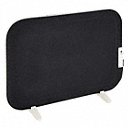 |
Radiant | 550 | Radiant Heaters for Home/Office Use Low-power electric radiant heaters offer supplementary warmth for nearby individuals, without heating the entire room. Flat panel radiant heaters are often placed under desks or tables to increase the personal comfort of the people working at them. |
| Electric | QMark flat panel heater | 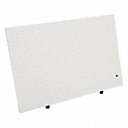 |
Radiant | 580 | |
| Electric | Cozy flat panel heater | 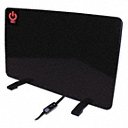 |
Radiant | 682 | |
| Electric | Sengoku radiant pedestal heater | 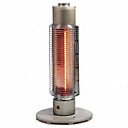 |
Radiant | 1,433 | |
| Electric | Dayton oil-filled electric heater with digital display | 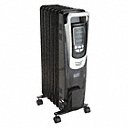 |
Convection | 5,118 | Oil Filled Radiator-Style Heaters Oil-filled radiator-style heaters are another alternative to fan-forced convection heaters. In these units, an electric element heats up oil in a sealed reservoir, which provides steady warmth to a room over a long period of time. According to the U.S. Department of Energy, units that use a heat-transfer liquid, as these do, are the "best types" of convection space heater, but they have limitations. Oil-filled heaters can warm a room without a fan, allowing for quiet operation, although some oil-filled units also include a fan to help distribute heat. Because the oil in the heater takes time to heat up, these units are unsuited to situations where heat is wanted for only a short time. On the other hand, because the oil takes some time to cool down, these units can continue to provide heat for a while after they're turned off (as in a bedroom at night). |
| Electric | Dayton oil-filled electric heater | 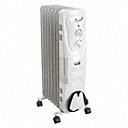 |
Convection | 5,118 |

Safety Management
Warehouse Ergonomics Tips to Help Reduce Strain and Injuries
Warehousing and distribution work often involves physical demands that can lead to strain over time. Learn how OSHA’s Warehousing NEP highlights ergonomic risks and ways to help address them.
![]() Our Latest KnowHow
Our Latest KnowHow

6 Tips to Help Prevent Slips, Trips and Falls
Identify the fall hazards in your workplace and implement a fall safety program. Check out these tips from Grainger so you can mitigate risk.
The information contained in this article is intended for general information purposes only and is based on information available as of the initial date of publication. No representation is made that the information or references are complete or remain current. This article is not a substitute for review of current applicable government regulations, industry standards, or other standards specific to your business and/or activities and should not be construed as legal advice or opinion. Readers with specific questions should refer to the applicable standards or consult with an attorney.


